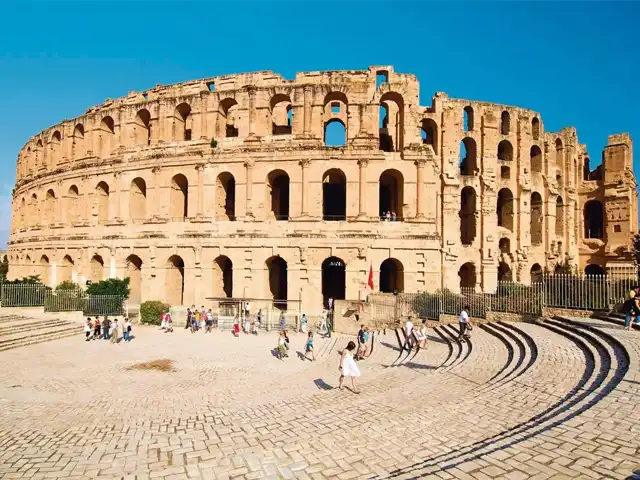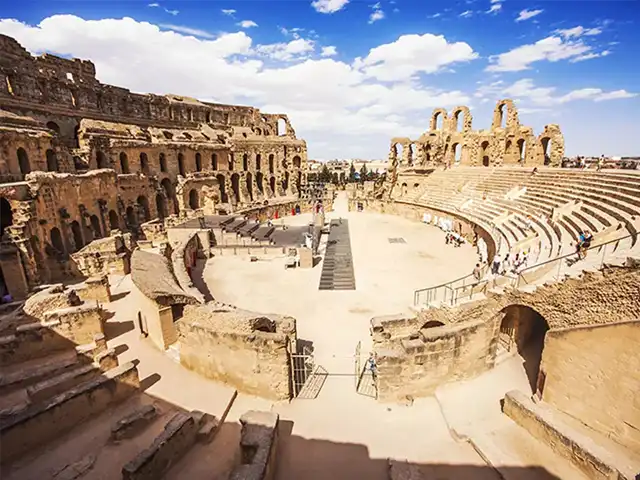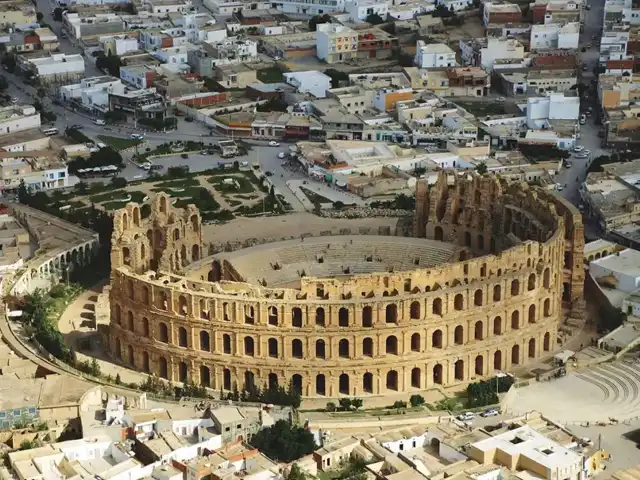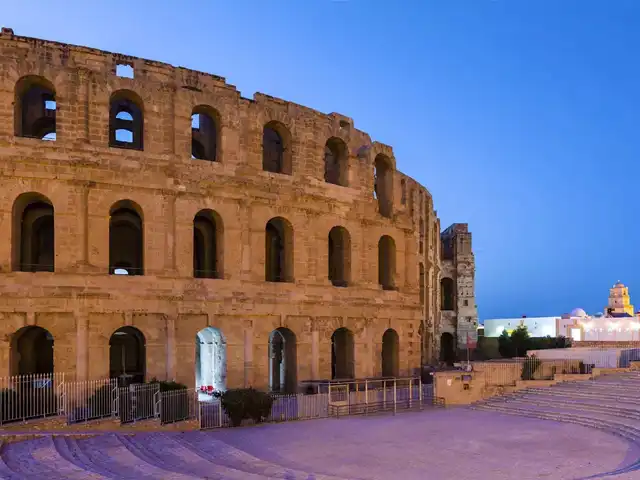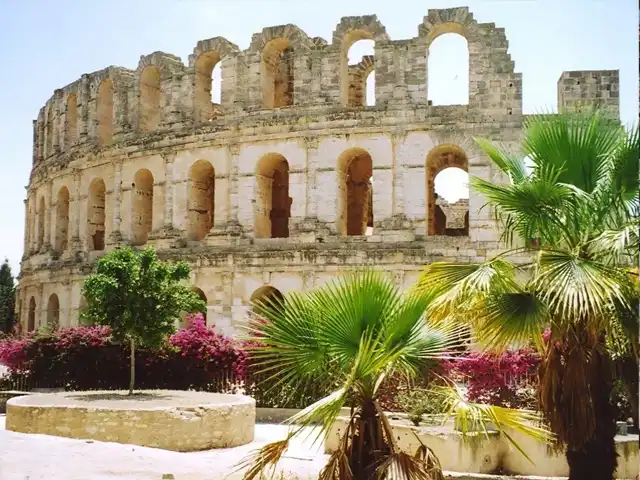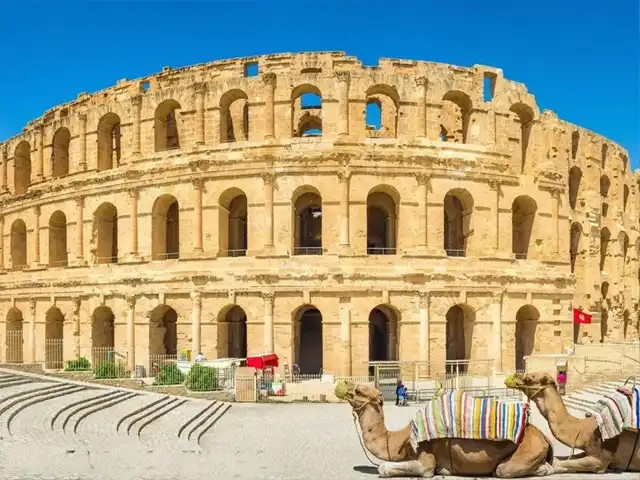Amphitheater of El Jem
The amphitheater of El Jem is an impressive Roman monument located in a flat and desert plain in North Africa. Its massive and round silhouette makes it visible from a long distance. The locality around the building has avoided tall buildings, making it even more prominent.
An Exceptional Preservation
Despite the many hardships the building has faced over time, the amphitheater of El Jem remains one of the best-preserved works of its kind. The severe cannon ball bombardment at the end of the 17th century caused a large breach in the side of the building. However, the monument has retained most of the supporting infrastructure of the stands, including the podium wall, the arena, and the underground, which are practically intact.
Capacity and Structure
The amphitheater at El Jem had an impressive capacity of up to 30,000 spectators, ranking it as the 7th largest amphitheater in the Roman Empire. The arena, measuring 65m in length along its long axis, is crossed in the basement by two large galleries. These galleries served as passageways for actors, beasts, and machines that could be confined in two series of eight underground cells.
A Milestone in Roman Africa
Erected around 238 AD, the amphitheater of El Jem is an important milestone in the history of Roman Africa. It testifies to the prosperity of the small city of Thysdrus (now known as El Jem) during the Roman Empire. The monument is one of the most accomplished examples of the Roman architectural type of the amphitheater, almost on a par with the Colosseum in Rome.
A Cultural Space
The El Jem Coliseum has not only served as a historical monument but also as a cultural space. For almost two decades, it has hosted the El Jem Symphony Music Festival and other artistic events during summer. Its grandeur and unique features have attracted attention from scholars and tourists alike.
The monument in Pictures
